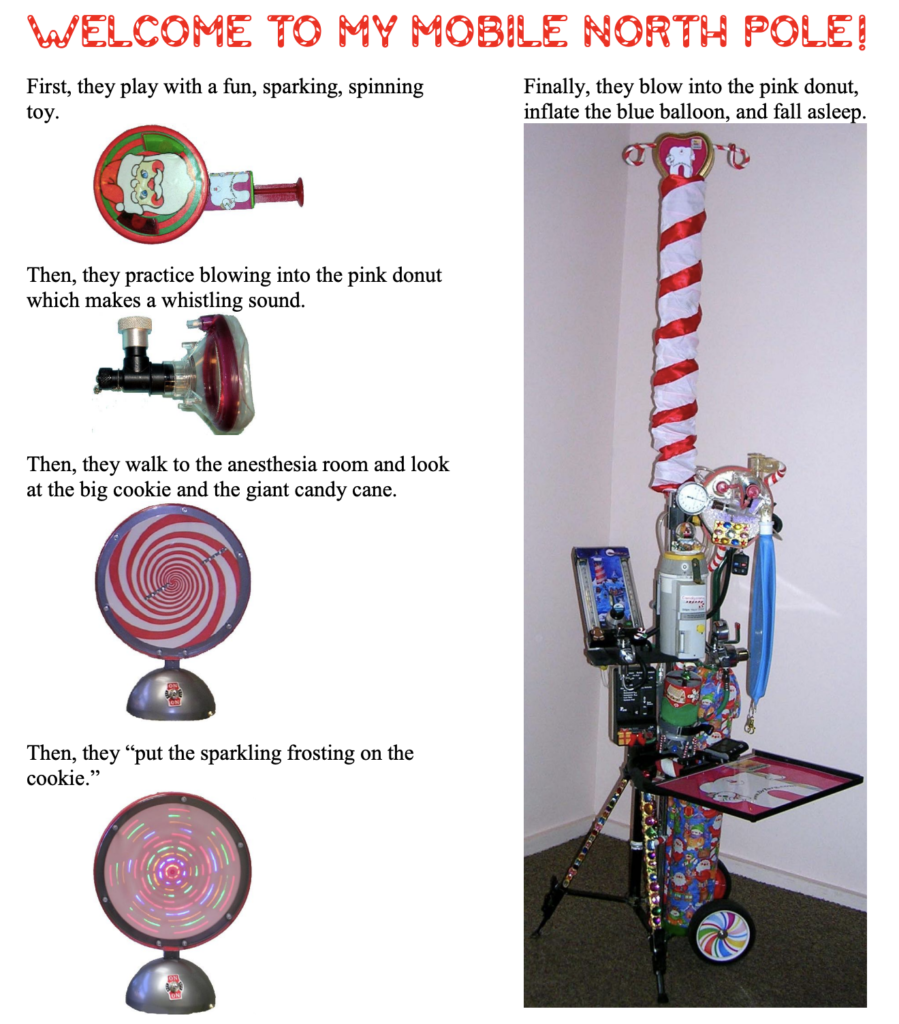More Frequently Asked Questions
There is no need to give an injection to start the sedation. Your child will fall asleep in your lap and remember nothing after just one breath of sleeping gas. Children are willing to breathe the gas because it smells like bubble gum and because they are prepared for a good experience.

I will contact you one or two days before the scheduled dental procedure to find out about any health problems your child may have, review the eating and drinking instructions, and discuss the details of his or her personalized anesthesia plan. At the time of the dental appointment, the parent usually walks the child to the procedure area. The child sits in the parent’s lap and goes to sleep by taking a few breaths of a bubble gum flavored gas while I tell a simple story. After the parent returns to the waiting area, I painlessly start a child sized intravenous line, attach the monitoring equipment, and deepen the anesthetic to the required level. For patients with disabilities or those who cannot cooperate, I may start the anesthesia while still in the waiting area by injecting relaxing medicine into your child’s arm. This feels like a vaccination. After 3 minutes, your child will be drowsy and will not recall anything further. At the end of the procedure, the dentist will meet you in the waiting area and discuss what was done. I will continue monitoring your child, and reunite the two of you as soon as he or she begins to wake up. Although your child may be grumpy for a little while, there are no long-term side effects.
I personally perform all aspects of the anesthetic, and your child will remain under my direct, constant supervision until discharged home. You rarely find a medical doctor like me sedating dental patients. Usually, if sedation is offered, it is provided by a dentist. The skills and medical judgment I have refined over years of hospital work caring for critically ill children and adults during complex operations should give you confidence that your child will be safe in my hands. After earning a B.S. degree in Biophysics and Biochemistry from Stanford University, I completed both medical school and four years of additional specialized anesthesiology training at the University of California, San Francisco School of Medicine (UCSF). This program is widely regarded as one of the top anesthesia training programs in the world. I have served on the UCSF and Stanford clinical faculty and published 19 scientific articles, abstracts, and book chapters. I have extensive experience in dental sedation and hold a Dental Board of California “General Anesthesia Permit.”
After the dental treatment, children tend to emerge rapidly from anesthesia feeling pain free, a little disoriented, and comfortably rested. Usually, patients can safely leave the office 20 minutes after the procedure. It is common to sleep part of the day, eat a light meal and be fresh and completely recuperated by the next morning. Complications are highly unusual with my technique.
